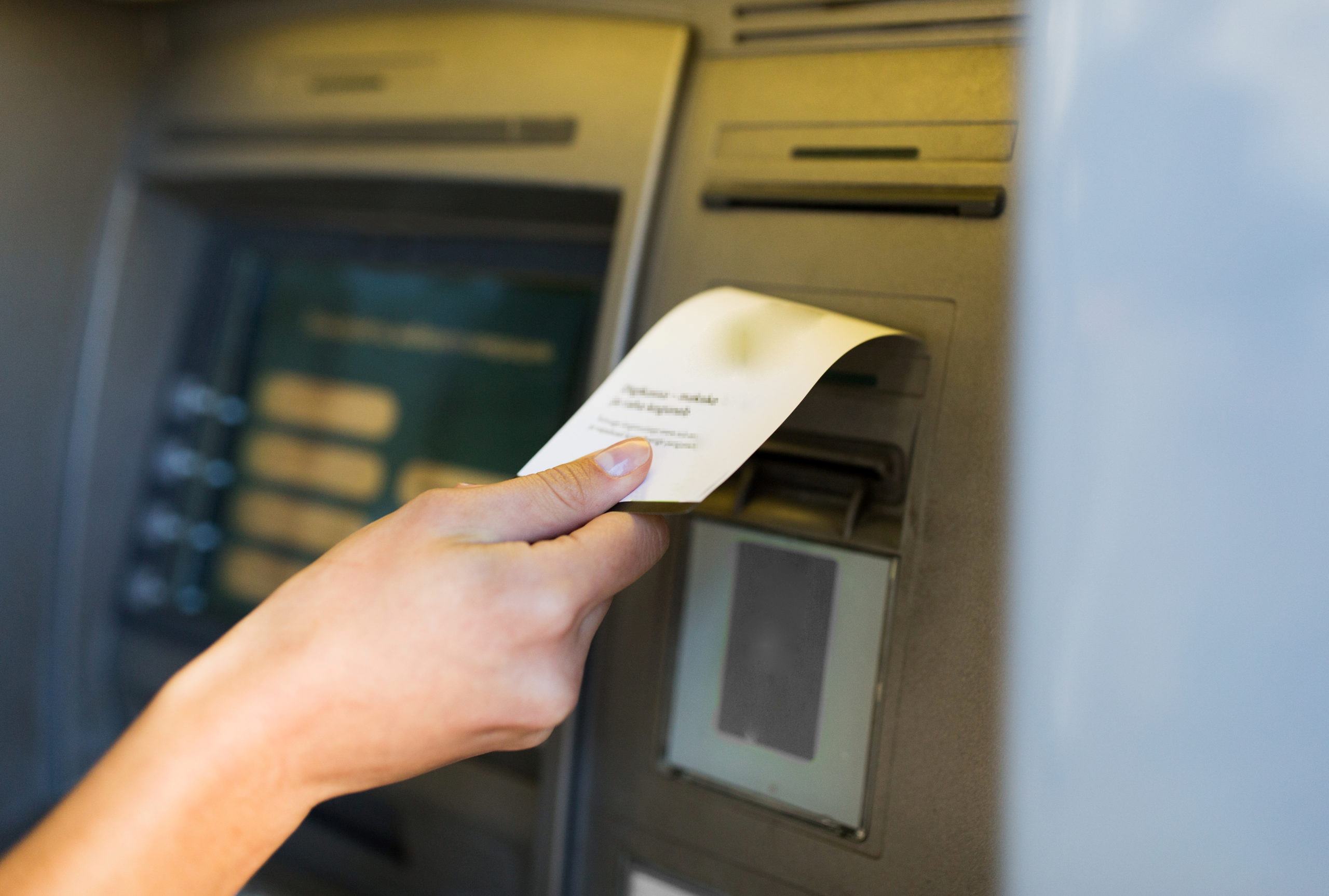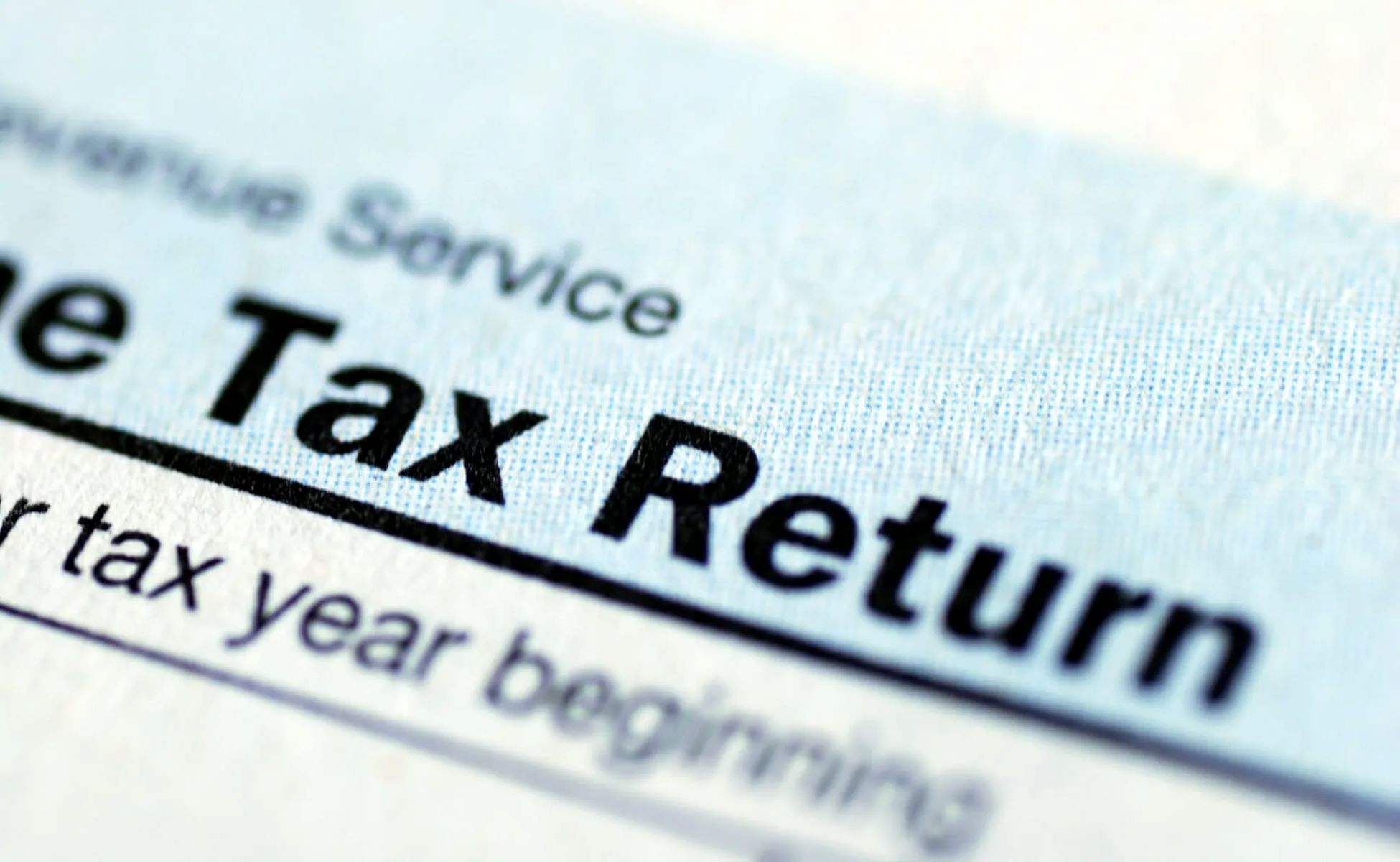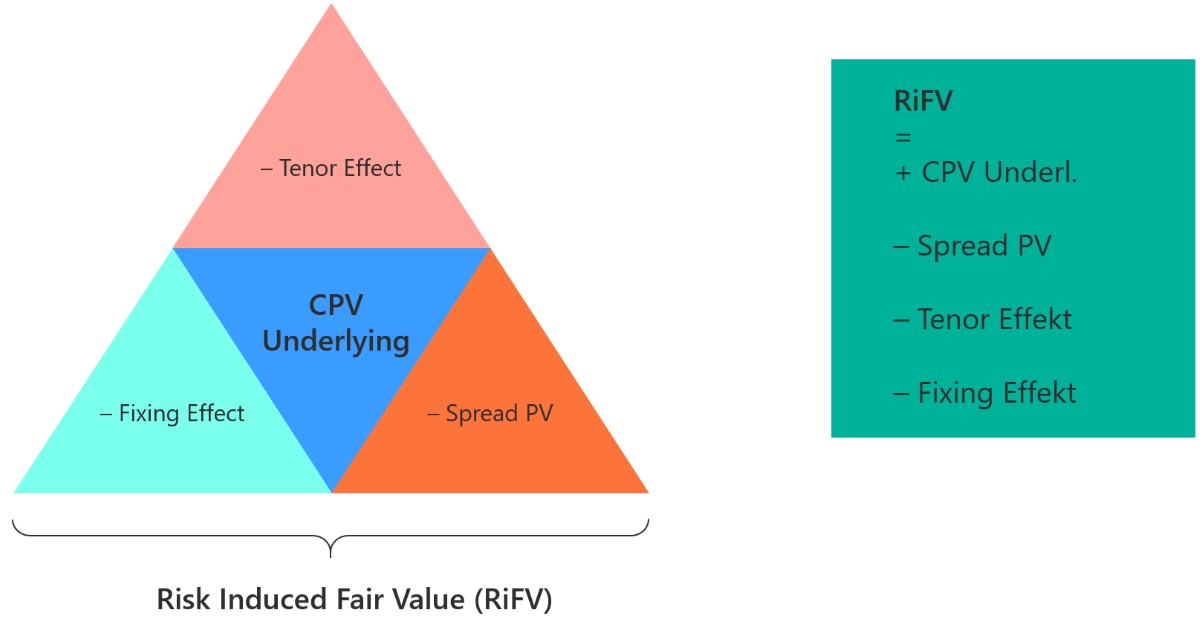

Finance
What Is PPV Accounting
Published: October 12, 2023
Learn about PPV accounting and its impact on finance. Gain insights into how this accounting method affects financial statements and decision making.
(Many of the links in this article redirect to a specific reviewed product. Your purchase of these products through affiliate links helps to generate commission for LiveWell, at no extra cost. Learn more)
Table of Contents
Introduction
Welcome to the world of PPV (Purchase Price Variance) accounting! In the complex and ever-evolving realm of finance, understanding and effectively implementing PPV accounting is crucial for businesses of all sizes. Whether you are a small startup or a multinational corporation, PPV accounting plays a pivotal role in managing and analyzing the financial aspects of your operations.
PPV accounting, also known as Purchase Price Variance accounting, is a financial management technique used to evaluate and measure the difference between the actual cost of purchasing goods or services and the standard or expected cost. It provides valuable insights into the performance of your procurement processes and allows you to make informed decisions to optimize your financial outcomes.
At its core, PPV accounting enables businesses to monitor and analyze the fluctuations in costs incurred during the purchasing process. By comparing actual purchase costs with predetermined standards, PPV accounting helps identify disparities and deviations from the expected costs.
The significance of PPV accounting cannot be overstated. By meticulously tracking and analyzing purchase price variances, businesses gain a deeper understanding of their cost structures. This knowledge empowers them to take decisive actions to reduce costs, improve efficiency, and enhance overall profitability.
Effective PPV accounting not only assists businesses in achieving financial objectives but also allows for better supplier negotiations. By analyzing variances in purchase prices, businesses can identify areas of improvement and negotiate better terms with suppliers, leading to cost savings and improved procurement efficiency.
Definition of PPV Accounting
PPV accounting, or Purchase Price Variance accounting, is a financial management technique that focuses on analyzing and evaluating the deviation between the actual purchase cost of goods or services and the standard or expected cost. It is a vital aspect of cost accounting and provides insights into the performance of procurement processes.
The main objective of PPV accounting is to measure and understand the reasons behind the disparities between the expected and actual costs of purchased items. By comparing the actual costs with the predetermined standards, businesses can identify and analyze the variances in purchase prices and delve deeper into the factors influencing these variations.
PPV accounting allows businesses to track and monitor the fluctuations in the purchase price of items. It helps in evaluating the efficiency of supplier contracts, highlighting any discrepancies, and identifying areas of potential cost savings. By gaining a comprehensive understanding of the purchase price variances, businesses can make informed decisions to optimize their procurement processes and improve financial performance.
Underlying the concept of PPV accounting is the recognition that changes in purchase prices impact the final cost of products or services. These changes can occur due to various factors, such as fluctuations in raw material prices, exchange rates, transportation costs, or changes in supplier agreements or terms.
PPV accounting is particularly relevant in industries with a heavy dependency on procurement, such as manufacturing, retail, and wholesale businesses. It provides valuable insights into how well a business manages its purchasing processes, ensuring that the actual costs remain in line with the desired standards.
In summary, PPV accounting is a fundamental aspect of cost analysis, allowing businesses to identify and evaluate disparities between the expected and actual costs of purchased items. It serves as a critical tool to drive cost optimization, enhance procurement practices, and ultimately improve overall financial performance.
Importance of PPV Accounting
PPV accounting holds immense importance for businesses of all sizes and industries. Here are key reasons why PPV accounting is crucial:
- Cost Monitoring: PPV accounting allows businesses to monitor and track the purchase price variances. By understanding the reasons behind cost discrepancies, businesses can take proactive measures to control costs and ensure their profitability.
- Performance Evaluation: PPV accounting provides insights into the efficiency and effectiveness of the procurement processes. By analyzing variances in purchase prices, businesses can evaluate the performance of suppliers and identify areas for improvement, ultimately enhancing the overall procurement strategy.
- Supplier Negotiations: PPV accounting empowers businesses to negotiate better terms with suppliers. By identifying variances in purchase prices and understanding the underlying factors, businesses can facilitate more favorable negotiations, leading to reduced costs and improved supplier relationships.
- Profitability Optimization: By monitoring and analyzing purchase price variances, businesses can identify cost-saving opportunities. This helps in optimizing profitability by making informed decisions around sourcing, renegotiating contracts, or exploring alternative suppliers.
- Identifying Cost Drivers: PPV accounting assists in identifying the key cost drivers affecting the purchase price variances. By understanding these drivers, businesses can focus on mitigating their impact through strategic initiatives, such as improving supplier relationships, streamlining processes, or exploring alternative sourcing options.
- Budgeting and Forecasting: PPV accounting provides valuable data that can be used for budgeting and forecasting purposes. By having a clear understanding of the expected purchase prices and monitoring the actual variances, businesses can accurately forecast future expenses and allocate resources accordingly.
- Process Improvement: PPV accounting highlights inefficiencies and gaps in the procurement processes. By analyzing the variances, businesses can identify areas for process improvement, such as implementing cost-effective sourcing strategies, streamlining supplier management, or establishing robust contract management systems.
In summary, PPV accounting is essential for businesses as it enables cost monitoring, performance evaluation, better supplier negotiations, profitability optimization, identification of cost drivers, budgeting and forecasting, and process improvement. By leveraging the insights provided by PPV accounting, businesses can make informed decisions and steer their procurement processes toward enhanced efficiency and financial success.
Purpose of PPV Accounting
The primary purpose of PPV (Purchase Price Variance) accounting is to analyze and evaluate the differences between the actual and expected costs of purchased goods or services. This financial management technique serves several purposes that are essential for businesses:
- Cost Control: The purpose of PPV accounting is to provide businesses with a mechanism to control and manage their costs effectively. By comparing actual purchase costs with predetermined standards, businesses can identify areas of cost savings and implement strategies to reduce expenses.
- Performance Measurement: PPV accounting helps businesses assess the performance of their procurement processes by analyzing variances in purchase prices. It allows for a comprehensive evaluation of supplier contracts, pricing structures, and sourcing strategies, enabling informed decisions to optimize performance.
- Better Decision Making: The purpose of PPV accounting is to equip businesses with accurate and reliable data to make informed decisions. By understanding the factors contributing to purchase price variances, businesses can make strategic choices regarding supplier selection, contract negotiation, and cost management.
- Supplier Relationship Management: PPV accounting facilitates better supplier relationship management by providing insights into the performance of suppliers. By identifying cost discrepancies and analyzing the reasons behind them, businesses can collaborate with suppliers to improve efficiency, reduce costs, and strengthen relationships.
- Budgeting and Forecasting: PPV accounting plays a key role in the budgeting and forecasting processes. By analyzing historical purchase price variances, businesses can accurately forecast future expenses and allocate resources accordingly. This aids in effective financial planning and decision-making.
- Process Improvement: PPV accounting helps businesses identify inefficiencies in their procurement processes. By pinpointing the reasons behind purchase price variances, businesses can implement process improvements and cost-saving initiatives, leading to enhanced operational efficiency, greater accuracy, and reduced costs.
The purpose of PPV accounting extends beyond simply tracking the differences between expected and actual purchase costs. It provides valuable insights into cost control, performance measurement, decision making, supplier relationship management, budgeting and forecasting, and process improvement. By leveraging the information derived from PPV accounting, businesses can optimize their financial outcomes, enhance operational efficiency, and drive sustainable growth.
Process of PPV Accounting
The process of PPV (Purchase Price Variance) accounting involves several key steps that businesses need to follow in order to accurately analyze and evaluate the differences between the expected and actual costs of purchased goods or services. Here is an overview of the process:
- Establishing Standard Costs: The first step in PPV accounting is to determine the standard costs of the purchased items. This involves setting predetermined benchmarks or targets based on historical data, market trends, or industry standards.
- Recording Actual Costs: Businesses must record the actual costs incurred for each purchased item. This includes all direct costs associated with acquiring the goods or services, such as the purchase price, taxes, shipping fees, or any other relevant expenses.
- Calculating Purchase Price Variance: The next step is to calculate the purchase price variance, which is the difference between the actual cost and the standard cost. This is done by subtracting the standard cost from the actual cost and analyzing the resulting variance.
- Identifying Variances: After calculating the purchase price variance, businesses need to analyze and identify the factors contributing to the variances. This involves examining various elements, such as changes in supplier prices, fluctuations in foreign exchange rates, or shifts in market conditions.
- Investigating Variances: Once the variances are identified, businesses must investigate the underlying causes. This may involve reviewing supplier contracts, negotiating with suppliers, analyzing purchasing patterns, or assessing the impact of external factors on costs.
- Implementing Corrective Measures: Based on the findings from the investigation, businesses can implement corrective measures to address the variances. This can include renegotiating supplier contracts, seeking alternative sourcing options, optimizing inventory management, or improving internal processes.
- Monitoring and Reporting: The process of PPV accounting is an ongoing one. Businesses need to continuously monitor and track purchase price variances to identify trends and patterns. Regular reporting and analysis of the variances provide valuable insights for decision-making purposes.
It is important to note that the process of PPV accounting may vary based on the specific needs and requirements of each business. However, the underlying principles remain the same – establishing standard costs, recording actual costs, calculating variances, identifying and investigating the causes, implementing corrective measures, and monitoring and reporting on an ongoing basis.
By following a structured and systematic process of PPV accounting, businesses can gain valuable insights into their procurement processes, make informed decisions to optimize costs, and improve overall financial performance.
Factors Affecting PPV Accounting
PPV (Purchase Price Variance) accounting is influenced by a variety of factors that can impact the differences between the expected and actual costs of purchased goods or services. These factors can vary across industries and businesses. Understanding and identifying these factors is crucial for businesses to effectively manage and analyze their PPV accounting. Here are some common factors affecting PPV accounting:
- Supplier Relationships: The strength of the relationship with suppliers can have a significant impact on PPV accounting. Good relationships can lead to favorable pricing terms and reduced variances, while strained relationships may result in higher costs and volatile variances.
- Market Conditions: External market factors such as changes in commodity prices, inflation rates, or foreign exchange rates can greatly impact PPV accounting. Fluctuations in these factors can lead to significant variances in purchase prices.
- Raw Material Costs: The costs of raw materials needed to produce goods or services can significantly affect PPV accounting. Changes in the costs of raw materials, such as metals, fuels, or agricultural products, can result in variances in purchase prices, impacting the overall PPV.
- Volume and Scale: The volume and scale of purchases can impact PPV accounting. Bulk purchases may result in better pricing terms and lower variances, while smaller purchases may lead to higher variances due to less negotiation power or higher unit costs.
- Quality Control: The quality of purchased goods or services can impact PPV accounting. Poor quality or defects in purchased items can result in additional costs for returns, replacements, or rework, leading to variances in initial purchase prices.
- Transportation and Logistics: Costs associated with transportation, shipping, and logistics can impact PPV accounting. Fluctuations in fuel prices, shipping rates, or unexpected delays can contribute to variances in the overall purchase prices.
- Supplier Contracts and Terms: The terms and conditions outlined in supplier contracts can affect PPV accounting. Changes in supplier contracts, including pricing agreements, payment terms, or discounts, can influence the purchase prices and subsequently impact the PPV.
- Internal Processes: The efficiency of internal processes, such as procurement, inventory management, or pricing strategies, can affect PPV accounting. Streamlining internal processes can help reduce variances and improve overall cost control.
It is important for businesses to be aware of these factors and regularly assess their impact on PPV accounting. By understanding and addressing these factors, businesses can make informed decisions, negotiate better terms with suppliers, optimize procurement processes, and ultimately improve their financial performance.
Calculation of PPV Accounting
The calculation of PPV (Purchase Price Variance) accounting involves comparing the actual cost of purchased goods or services with the predetermined standard cost. This calculation enables businesses to analyze and evaluate the variance between the expected and actual costs. Here is the calculation process:
- Establishing Standard Costs: The first step in calculating PPV is to determine the standard cost for each purchased item. Standard costs are predetermined benchmarks that represent the expected cost based on historical data, market trends, or industry standards.
- Recording Actual Costs: Businesses need to record the actual costs incurred for each purchased item. This includes all direct expenses associated with the acquisition of the goods or services, such as the purchase price, taxes, shipping fees, or any other relevant expenses.
- Calculating PPV: The next step is to calculate the purchase price variance by subtracting the standard cost from the actual cost. The formula for calculating PPV is as follows: PPV = Actual Cost – Standard Cost. The resulting value indicates the variance between the actual and expected costs.
- Analyzing PPV: Once the PPV is calculated, businesses need to analyze the resulting variance. This analysis involves investigating the factors contributing to the variance, such as changes in supplier prices, fluctuations in exchange rates, or shifts in market conditions.
- Reporting and Documentation: It is important for businesses to maintain proper documentation and record-keeping of the PPV calculations. This includes recording the PPV values, analyzing the reasons behind the variances, and documenting any actions taken to address the variances.
It is worth noting that the calculation of PPV can be performed for individual items, specific product categories, or overall procurement processes, depending on the business’s requirements. The frequency of calculations can also vary, ranging from daily to monthly or quarterly, depending on the volume and complexity of purchases.
By consistently calculating and analyzing PPV, businesses can gain insights into their cost structures, identify areas for improvement, negotiate better terms with suppliers, and make informed decisions to optimize their financial outcomes.
Advantages of PPV Accounting
PPV (Purchase Price Variance) accounting offers several advantages for businesses, enabling them to enhance cost control, optimize procurement processes, and improve overall financial performance. Here are some key advantages of implementing PPV accounting:
- Cost Control: PPV accounting allows businesses to monitor and track the variances between the expected and actual costs of purchased items. By understanding these variances, businesses can implement cost-saving measures, negotiate better terms with suppliers, and optimize their cost structures.
- Performance Evaluation: PPV accounting provides valuable insights into the efficiency and effectiveness of procurement processes. By analyzing variances in purchase prices, businesses can evaluate supplier performance, identify areas of improvement, and make informed decisions to optimize their sourcing strategies.
- Better Supplier Negotiations: By tracking and analyzing variances in purchase prices, businesses have the data needed for effective supplier negotiations. Armed with this information, businesses can negotiate better pricing terms, improve supplier relationships, and achieve cost savings through strategic supplier management.
- Optimized Profitability: By identifying and addressing purchase price variances, businesses can optimize profitability. PPV accounting allows for better cost management, improved efficiency in procurement processes, and the identification of potential cost savings, ultimately leading to greater profitability.
- Data for Decision Making: PPV accounting provides businesses with crucial data for informed decision-making. By monitoring and analyzing purchase price variances, businesses can make strategic choices related to sourcing, supplier selection, pricing strategies, and process improvements.
- Budgeting and Forecasting: PPV accounting plays a vital role in budgeting and forecasting. By analyzing historical purchase price variances, businesses can accurately project future expenses, allocate resources effectively, and plan for financial stability and growth.
- Process Improvement: By analyzing PPV, businesses can identify inefficiencies and gaps in their procurement processes. This awareness empowers businesses to implement process improvements, streamline operations, and enhance cost-effectiveness in purchasing operations.
In summary, implementing PPV accounting provides businesses with numerous advantages, including enhanced cost control, improved procurement performance, better supplier negotiations, optimized profitability, data for effective decision-making, accurate budgeting and forecasting, and opportunities for process improvement. By leveraging the benefits of PPV accounting, businesses can strengthen their financial position and achieve sustainable growth.
Limitations of PPV Accounting
While PPV (Purchase Price Variance) accounting offers several benefits, it is important to acknowledge its limitations. Understanding these limitations is crucial for businesses to effectively interpret and utilize PPV accounting data. Here are some key limitations of PPV accounting:
- Failure to Capture Non-Purchase Price Factors: PPV accounting primarily focuses on purchase price variances and may overlook other cost-related factors such as quality issues, transportation costs, or lead time variations. To gain a holistic view of costs, businesses need to complement PPV accounting with other cost analysis techniques.
- Limited Focus on Non-Material Aspects: PPV accounting is primarily concerned with the cost variances related to purchased items. It may not capture non-material aspects, such as changes in specifications, delivery schedules, or service levels, which can also impact total costs and need to be considered separately.
- Variances Due to Factors Beyond Control: PPV accounting does not account for variances caused by factors beyond a business’s control, such as sudden changes in market prices or economic conditions. These external factors can significantly impact purchase prices, and their influence may not be accurately captured through PPV accounting alone.
- Subjectivity in Setting Standard Costs: The determination of standard costs, a key component of PPV accounting, involves some level of subjectivity. Different assumptions and methodologies can result in variations in standard cost calculations, making it important for businesses to establish robust and objective methodologies.
- Time and Resource Intensive: Implementing and maintaining a comprehensive PPV accounting system requires significant time, resources, and data management capabilities. SMEs or businesses with limited resources may find it challenging to effectively implement and sustain the process.
- Complexity in Data Interpretation: Analyzing and interpreting PPV data can be complex, especially when dealing with large volumes of transactions. Understanding the underlying causes of variances and determining actionable insights requires advanced analytical skills and expertise in finance and procurement.
- Focus on Historical Performance: PPV accounting primarily looks at historical purchase price variances, which may not always reflect future performance or provide insights into potential cost-saving opportunities. Businesses must supplement PPV accounting with forward-looking strategies and performance management techniques.
Despite these limitations, PPV accounting remains a valuable tool for businesses to evaluate cost variances and optimize procurement processes. To mitigate these limitations, businesses can consider integrating additional cost analysis methods, investing in advanced data management and analysis tools, and incorporating insights from cross-functional teams.
Examples of PPV Accounting
To better understand how PPV (Purchase Price Variance) accounting works in practice, let’s consider a couple of examples:
Example 1: Manufacturing Company
A manufacturing company uses PPV accounting to evaluate the cost variances in its procurement processes. The company determines a standard cost for the raw materials required to produce its products based on historical data and market trends. However, due to fluctuations in commodity prices, the actual purchase costs of the raw materials deviate from the standard costs.
By calculating and analyzing the PPV, the company discovers that the increase in the purchase price of the raw materials is contributing to a negative variance. Upon further investigation, it is determined that changes in global market demand and supply chain disruptions have caused the increase in prices.
With this information, the company can take corrective measures to mitigate the negative impact of the variances. It may consider renegotiating supplier contracts, exploring alternative sourcing options, or implementing strategies to hedge against commodity price fluctuations. These actions enable the company to optimize its costs, improve profitability, and ensure continued production efficiency.
Example 2: Retail Company
A retail company implements PPV accounting to evaluate the variances in the purchase prices of its products. The company sets standard costs for the items it purchases from suppliers based on market research and historical data. As part of its PPV accounting process, the company regularly compares the actual purchase prices with the standard costs.
Through this analysis, the company identifies a positive PPV, indicating that the actual purchase prices are lower than the standard costs. Upon further investigation, it is revealed that the positive PPV is due to negotiations with suppliers that resulted in favorable pricing terms and discounts. Additionally, improvements in inventory management processes led to bulk purchases, further reducing costs per unit.
Based on these findings, the retail company can make data-driven decisions to optimize its procurement process. It may consider extending contracts with the suppliers offering better pricing terms, leverage its purchasing power to negotiate favorable agreements with other suppliers, or replicate successful inventory management practices across its locations. These actions allow the company to capitalize on cost savings opportunities, boost profitability, and strengthen supplier relationships.
These examples illustrate how PPV accounting can be applied in different industries and businesses to evaluate cost variances in procurement processes. By implementing PPV accounting and analyzing the resulting variances, businesses can gain insights into their cost structures, negotiate better terms with suppliers, optimize procurement practices, and drive financial performance.
Conclusion
PPV (Purchase Price Variance) accounting is a powerful financial management technique that allows businesses to monitor, analyze, and evaluate the differences between expected and actual costs of purchased goods or services. By calculating and analyzing the variances, businesses can gain valuable insights into their procurement processes, make informed decisions, and drive cost optimization.
Throughout this article, we have explored the definition, importance, purpose, process, and calculation of PPV accounting. We have also highlighted the factors influencing PPV accounting, the advantages it offers, and its limitations. Additionally, we provided examples to illustrate how PPV accounting can be applied in different business scenarios.
By implementing PPV accounting, businesses can effectively monitor and control costs, evaluate supplier performance, negotiate better terms, optimize profitability, and improve overall financial performance. It enables businesses to identify areas for improvement in their procurement processes, implement corrective actions, and drive operational efficiency.
However, it is essential to acknowledge the limitations of PPV accounting, such as its incapacity to account for non-purchase price factors and the subjectivity in setting standard costs. To maximize the benefits of PPV accounting, businesses should complement it with additional cost analysis techniques, invest in data management tools, and prioritize cross-functional collaboration.
In conclusion, PPV accounting is a valuable tool that empowers businesses to make data-driven decisions, enhance cost control, optimize procurement practices, and drive sustainable growth. By leveraging the insights from PPV accounting, businesses can navigate the dynamic economic landscape, achieve efficiency in purchasing operations, and secure long-term success.














